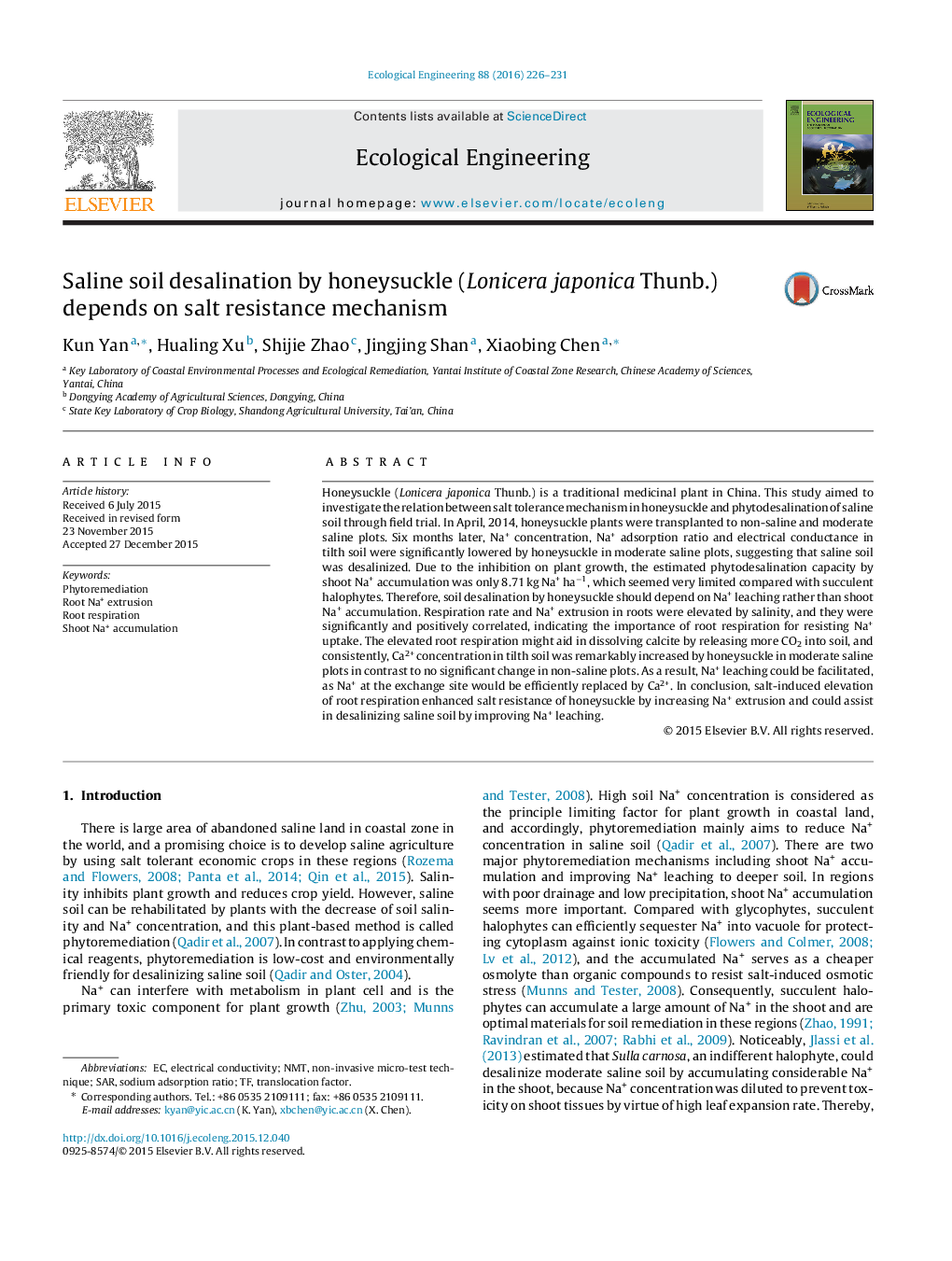| Article ID | Journal | Published Year | Pages | File Type |
|---|---|---|---|---|
| 6301567 | Ecological Engineering | 2016 | 6 Pages |
Abstract
Honeysuckle (Lonicera japonica Thunb.) is a traditional medicinal plant in China. This study aimed to investigate the relation between salt tolerance mechanism in honeysuckle and phytodesalination of saline soil through field trial. In April, 2014, honeysuckle plants were transplanted to non-saline and moderate saline plots. Six months later, Na+ concentration, Na+ adsorption ratio and electrical conductance in tilth soil were significantly lowered by honeysuckle in moderate saline plots, suggesting that saline soil was desalinized. Due to the inhibition on plant growth, the estimated phytodesalination capacity by shoot Na+ accumulation was only 8.71 kg Na+ haâ1, which seemed very limited compared with succulent halophytes. Therefore, soil desalination by honeysuckle should depend on Na+ leaching rather than shoot Na+ accumulation. Respiration rate and Na+ extrusion in roots were elevated by salinity, and they were significantly and positively correlated, indicating the importance of root respiration for resisting Na+ uptake. The elevated root respiration might aid in dissolving calcite by releasing more CO2 into soil, and consistently, Ca2+ concentration in tilth soil was remarkably increased by honeysuckle in moderate saline plots in contrast to no significant change in non-saline plots. As a result, Na+ leaching could be facilitated, as Na+ at the exchange site would be efficiently replaced by Ca2+. In conclusion, salt-induced elevation of root respiration enhanced salt resistance of honeysuckle by increasing Na+ extrusion and could assist in desalinizing saline soil by improving Na+ leaching.
Keywords
Related Topics
Life Sciences
Agricultural and Biological Sciences
Ecology, Evolution, Behavior and Systematics
Authors
Kun Yan, Hualing Xu, Shijie Zhao, Jingjing Shan, Xiaobing Chen,
